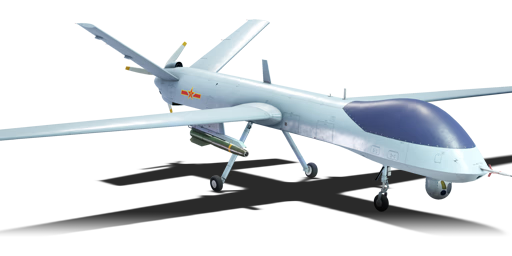


After seeing the potential of UCAVs (Unmanned Combat Aerial Vehicles) during the Iraq War that began in 2003, a team of engineers from Chengdu Aircraft Industry Group began development on a prototype of their own for the People's Liberation Army Air Forces. After testing, the team would go on to develop the Wing Loong I (翼龙-1; Pterosaur-1), designated by the PLAAF as the GJ-1 (攻击-1; attacker-1), which was shown off at the 2010 Zhuhai air show. It has been in service with the PLAAF since the early-2010s and versions have been exported to multiple countries, especially in Asia and the Middle East.
Introduced in Update "Drone Age", the Wing Loong I is not a researchable vehicle; instead, it is accessible in ground battles by players using Chinese vehicles for a cost of 750 spawn points. Players can use the Wing Loong I's missiles effectively against enemy ground targets from long ranges. However, it is to be noted that the high SP cost to spawn a Strike UCAV should be weighed against other available options, such as aircraft and helicopters. It is recommended to only use the Wing Loong I if the player has no other close-air support option or deems the drone's benefits to be worth the high spawn cost.
flaps
flaps
flaps
brake
| Name | Weight | Slot | ||||||
|---|---|---|---|---|---|---|---|---|
| 33.5 kg |  |  | ||||||
| 53 kg |  |  | ||||||